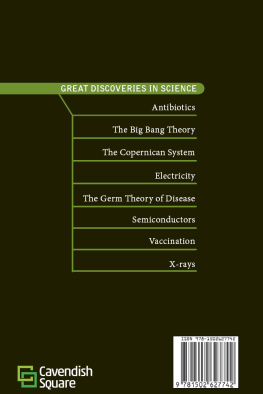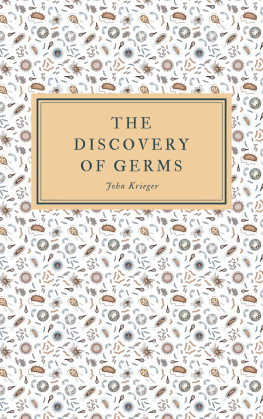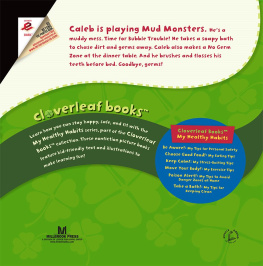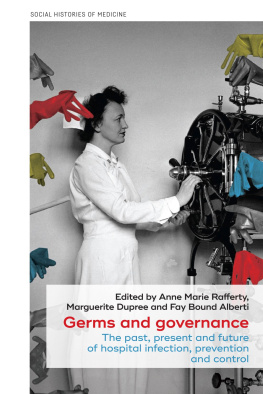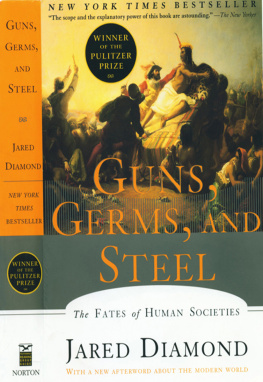Germs in the English Workplace, c.18801945
This book looks at how the workplace was transformed through a greater awareness of the roles that germs played in English working lives from c.1880 to 1945. Cutting across a diverse array of occupational settings such as the domestic kitchen, the milking shed, the factory, and the Post Office it offers new perspectives on the history of the germ sciences. It brings to light the ways in which germ scientists sought to transform English working lives through new types of technical and educational interventions that sought to both eradicate and instrumentalise germs. It then asks how we can measure and judge the success of such interventions by tracing how workers responded to the potential applications of the germ sciences through their participation in friendly societies, trade unions, colleges, and volunteer organisations. Throughout the book, close attention is paid to reconstructing vernacular traditions of working with invisible life in order to better understand both the successes and failures of the germ sciences to transform the working practices and material conditions of different workplaces. The result is a more diverse history of the peoples, politics, and practices that went into shaping the germ sciences in late nineteenth- and early twentieth-century England.
Laura Newman is currently a Postdoctoral Research Associate based at Kings College London.
Routledge Studies in the History of Science, Technology and Medicine
Soviet Science and Engineering in the Shadow of the Cold War
Hiroshi Ichikawa
Cold Science
Environmental Knowledge in the North American Arctic During the Cold War
Stephen Bocking and Daniel Heidt
Medical Memories and Experiences in Postwar East Germany
Treatments of the Past
Markus Wahl
Politics, Statistics and Weather Forecasting, 18401910
Taming the Weather
Aitor Anduaga
Social Class and Mental Illness in Northern Europe
Edited by Petteri Pietikinen and Jesper Vaczy Kragh
Medicine and Justice
Medico-Legal Practice in England and Wales, 17001914
Katherine D. Watson
Lifestyle and Medicine in the Enlightenment
The Six Non-Naturals in the Long Eighteenth Century
Edited by James Kennaway and H.G. Knoeff
Germs in the English Workplace, c.18801945
Laura Newman
For more information about this series, please visit: www.routledge.com/Routledge-Studies-in-the-History-of-Science-Technology-and-Medicine/book-series/HISTSCI
First published 2021
by Routledge
2 Park Square, Milton Park, Abingdon, Oxon OX14 4RN
and by Routledge
52 Vanderbilt Avenue, New York, NY 10017
Routledge is an imprint of the Taylor & Francis Group, an informa business
2021 Laura Newman
The right of Laura Newman to be identified as author of this work has been asserted in accordance with sections 77 and 78 of the Copyright, Designs and Patents Act 1988.
All rights reserved. No part of this book may be reprinted or reproduced or utilised in any form or by any electronic, mechanical, or other means, now known or hereafter invented, including photocopying and recording, or in any information storage or retrieval system, without permission in writing from the publishers.
Trademark notice: Product or corporate names may be trademarks or registered trademarks, and are used only for identification and explanation without intent to infringe.
British Library Cataloguing-in-Publication Data
A catalogue record for this book is available from the British Library
Library of Congress Cataloging-in-Publication Data
A catalog record for this book has been requested
ISBN: 978-1-138-36851-4 (hbk)
ISBN: 978-0-429-42917-0 (ebk)
Typeset in Sabon
by Apex CoVantage, LLC
Contents
1 Germs and the working-class body: redefining tuberculosis at the Post Office Sanatorium Society
2 Handling germs in the Post Office
3 Learning about dairy germs in the Midlands
4 Eradicating and instrumentalising dairy germs
5 Poisons, pastes, and pigs: Shippams of Chichester and the industrial food germ
6 Domesticating the germ sciences: jams and gender in the English kitchen
Conclusion
- 1 Germs and the working-class body: redefining tuberculosis at the Post Office Sanatorium Society
- 2 Handling germs in the Post Office
- 3 Learning about dairy germs in the Midlands
- 4 Eradicating and instrumentalising dairy germs
- 5 Poisons, pastes, and pigs: Shippams of Chichester and the industrial food germ
- 6 Domesticating the germ sciences: jams and gender in the English kitchen
- Conclusion
Guide
1.1 Patients undertaking walking exercises in the grounds of Benenden Sanatorium, undated
1.2 Patients chopping and sawing wood as part of their treatment at Benenden Sanatorium, undated
3.1 Half-poster for the Midland Agricultural and Dairy College, early twentieth century
4.1 Tinned steel milking bucket, c.1920s1930s
4.2 Illustration of an American Freeman-style milking pail, ac.1910
4.3 Illustration of an American Loy-style milking pail, c.1910
4.4 Christian Hansens laboratory in Reading, 1916
5.1 The Shippams East Walls Factory paste filling room, c.1938
5.2 Advertising photo, Turkeys, Ducks, Pheasants and Hams for Shippamss Pastes, c.1930s
5.3 Image of hand-basin at Shippams East Walls Factory, c.1914
3.1 Definitions of graded milk under the 1923 Order
3.2 Number of bacteriological milk samples undertaken at the Midlands Agricultural and Dairy College at yearly intervals from the months of January to March, 19251930
This book emerged during my time as a collaborative doctoral award PhD student at Kings College London and The Science Museum, which was generously funded by the Arts and Humanities Research Council.
Both during my time as a doctoral student and after I have been shown seemingly limitless reserves of patience, kindness, and intellectual insight by my primary supervisor Anna Maerker. It has been a pleasure to get to know her as both a friend and a scholar (she exceeds at both). Other members of staff and students at Kings, both past and present, supported me in various ways. Abigail Woods and Michael Bresalier taught me much during my upgrade experience. Claire Jones has always been a reliable source of support, both before and after the PhD. Agnes Arnold-Forster gave me valuable insight into the history of cancer, while Esther Harper, Maggie Scull, and Jennifer Altehenger never failed to make me smile.
I owe much to my Science Museum colleagues, too, particularly all the staff and students at the Research Department and the History of Medicine team. My supervisor Robert Bud has always been unwavering in his enthusiasm for the project. Natasha McEnroe has been in my life for a number of years now since my time at the Florence Nightingale Museum, and it was nice to have my time at the museum bookended by her joining the Medicine team. Oisn Wall was one of the highlights of my time at the Museum through his support both as Research Curator and as a friend. Laurie Michel-Hutteau, Adam Boal, and Bergit Arends at the Research Department always did their best to make me and my fellow PhD students feel supported. Speaking of which: Rachel Boon, thank you for being such a great office pal and fellow postal history nerd. Some of my biggest thanks are reserved for Stuart Butler, who effectively served as my unofficial third supervisor by providing a ridiculous amount of emotional support and proofreading.


